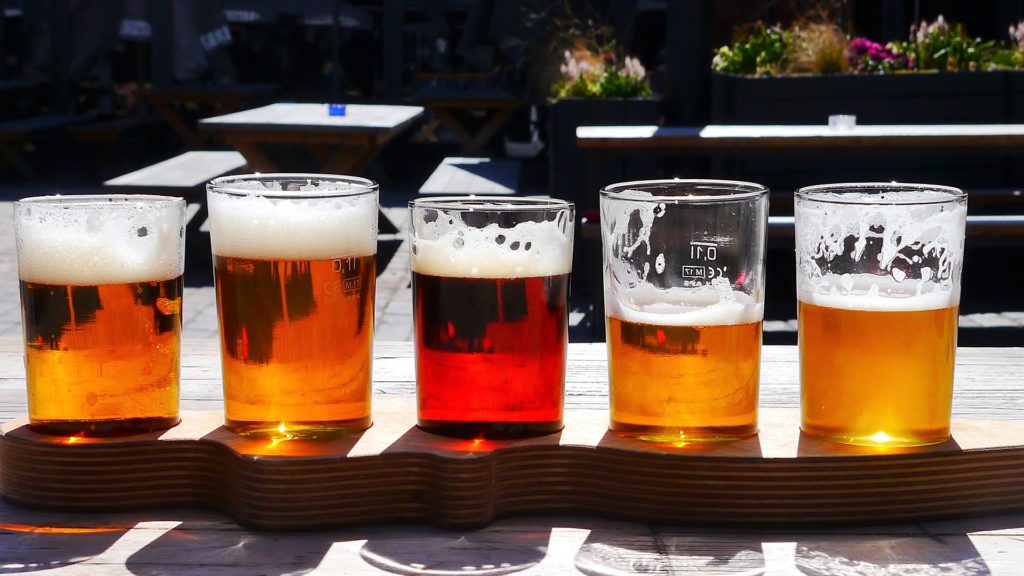
Beer can be used to complement the flavour of food in the same manner that wine does. Beer improves the taste of both the brew and the dish by introducing new flavors. Because not all beers are suitable for all foods, you must carefully mix the meal and beer to achieve the best flavor. Beer is now available in several flavours, giving you a wealth of alternatives for pairing it with your favourite dish of the day. Beertannica has some great guides that you can check out for anything beer related.
There are a few basic rules to follow that are relatively simple to grasp when it comes to beer and food combinations. Be cautious of the influence beer will have on your taste buds. Select a beer with a flavor that complements the flavors of your meal. Light meals should be coupled with light beers for novices, while heavy meals should be paired with dark ones. Specific beers can be chosen to compliment typical flavor dishes, much as particular wines can be selected to accompany various foods. Let’s look at some suggestions to help us determine the best beer to pair with the best meal pairing.
A light-bodied Kolsh beer can be used to complement lighter dishes like salads and salmon. Still, sour, hoppy beers like Pilsner are better suited to dishes like salmon, tuna, and other oily, fatty fish like tuna and mackerel. Pilsners and American Pale Ales, for example, pair well with heavy items like chips or cheese.
Strong-flavoured beers, such as Brown Ale or Porter, pair well with barbecued ribs. An Oktoberfest beer with Caramel Malts complements other grilled or seared foods particularly nicely. Even Brown Ales go well with roasted pig, smoked sausage, and grilled meats and vegetables. Warm meat meals with gravy, such as Shepherd’s Pie, complement a Cream Stout or a glass of heavy Porter.
Porters complement the chocolate, espresso, and coffee-flavored pastries and soft, creamy cheeses, among other things, in addition to smoked meats, notably bacon.
– A pleasant break from the heat can be provided by serving a Pale Ale or Pilsner alongside hot Indian heavy meals. Beer is a beautiful method to cut through the spicy and fatty flavours of some dishes. Malty and sweet beers go well with spicy dishes like Mexican or other exotic cuisines.
Light-bodied lagers are an excellent beer to combine with spicy Thai and Pan Asian cuisine because of their light body. This beer can also improve the flavor of Latin and Mexican cooking by cutting through the heat and spice.
Ingredients or flavours that are similar to one another can be found in both cuisine and brewing. In contrast to matches, you can contrast the meal and beer by combining them. The intricacy of the flavors in both the beer and the dish will clash and bring out their distinct flavors. Unusual combinations, such as a Pale Ale with smoked fish or a stout with fruit desserts, can surely spice up your meal. You can also try pairing international beers from the same region with different sorts of food. They typically operate well together because they are both drawn from the same source. Mexican beers, for example, go well with Mexican cuisine, but Japanese-brewed lagers go well with Japanese cuisine. To discover the ideal pairings, examine how the flavors merge and complement one another.
Beer and Food: A Match Made in Heaven
In addition to the traditional practice of serving food and wine together, the right beer pairing can complement and enhance the flavors of food. While beer and food pairing is not an exact science, some general guidelines may help you get the maximum enjoyment out of both the beer and the meal you’re eating.

First, remember that neither beer nor food should take center stage when combining beer and hearty dinner on a cold night. Instead, strive for a sense of balance between the two, with each dish’s flavors, textures, and heartiness complementing and enhancing the other.
Many people prefer to pair dark, heavier beers with meats and lighter beers with fish, chicken, and salads, much like red wine are generally served with red meat and white wine with fish and chicken. While this is not always the case, it is an excellent place to start if you are new to experimenting with beer and food pairings.
A well-balanced beer can also reduce the flavor of food; for example, the acidity of a powerfully hopped ale cuts through the richness of fattier foods like cheese or fried fish, whilst sweeter, maltier beers can cut through the spiciness of Asian or Mexican dishes.
In most circumstances, selecting beers and dishes based on their geographical implications is an excellent way to ensure a proper combination. Mexican beers, for example, are typically light and acidic, which naturally pairs well with fiery Mexican cuisine, whereas Japanese lagers suit sushi and other Japanese dishes. To their credit, most ethnic restaurants frequently provide a selection of traditional beers to make pairing easier.
These general criteria should pique your interest the next time you go out to dinner. Still, beer and cuisine are meant to be appreciated and enjoyed, whether consumed together or separately. So, if something seems delicious to you, go ahead and eat it.

Leave a Reply